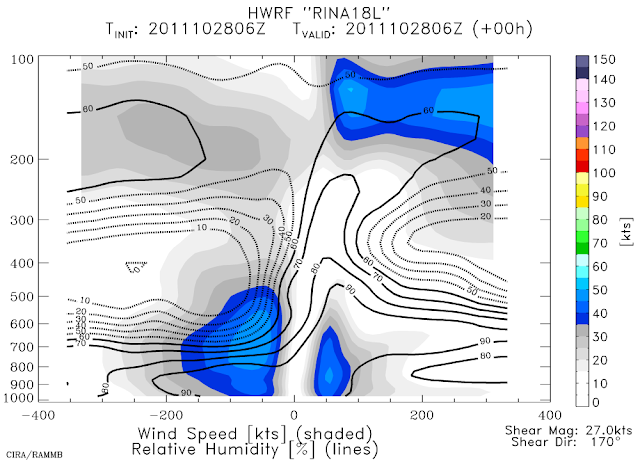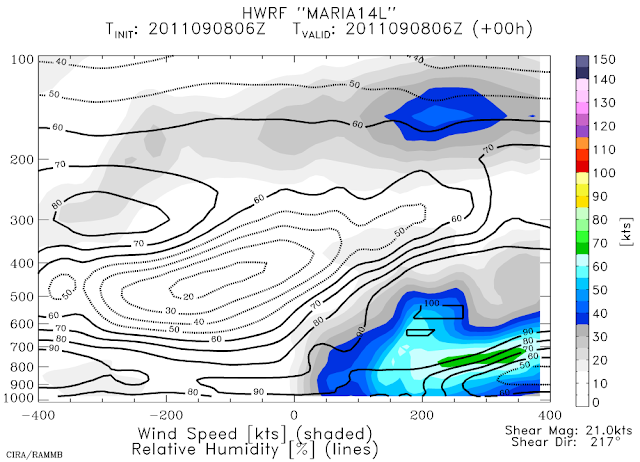Against all odds, the storm that was not even a Depression three days ago is now a 100kt major hurricane... the 3rd major hurricane of the season. Since the 27th at 21Z when Ophelia regained Depression status, the maximum winds increased 75kts and the central pressure fell 48mb. More impressively, we can narrow the time window down to the past 12 hours, when the winds increased by 25kts and the pressure fell 19mb.
This rapid intensification was not anticipated by dynamical models, statistical models, or human forecasters, and goes to show how little we still know about what makes these storms tick. One run sticks out, which suggests it was more serendipitous than skillful... HWRF's 18Z run on Sep 27th was fairly accurate:
Ophelia is now forecast to maintain Category 3 intensity for another day or so, then gradually weaken and become extratropical by early next week as it gets whisked into the north central Atlantic by a strong mid-latitude trough. Something to keep an eye on is Buoy 41049, which should get a near hit from Ophelia on Saturday afternoon:
http://www.ndbc.noaa.gov/station_page.php?station=41049. The winds are already on the rise there, the pressure is falling, and the significant wave height is up to 10 feet and increasing rapidly.
Philippe hasn't been so fortunate. Still a 45kt tropical storm, it is battling relentless vertical shear, and will continue to do so for several more days.
In the plot below, you can see the track forecasts taking it generally westward over the next 5 days, and the shear forecast highlighting an unpleasant week for Philippe. The official intensity forecast is in line with the statistical models on that plot (LGEM, DSHP, SPC3), and weakens the storm to a Depression by the end of the weekend.
Please visit my tropical Atlantic headquarters.




















































